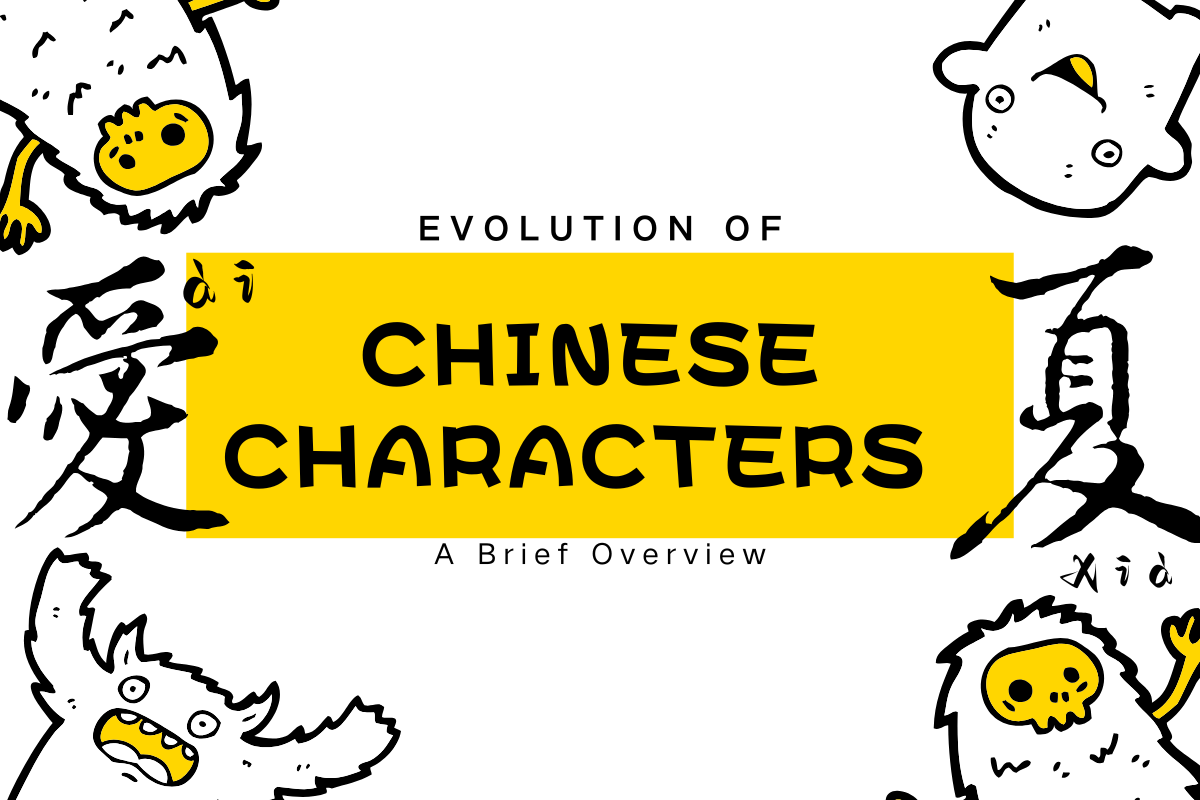Evolution of Chinese Characters: A Brief Overview
Chinese culture is making its way to the world, and to understand Chinese culture, one must first delve into the evolution of Chinese characters 汉字(hàn zì), which serve as a bridge of communication. Today, let's explore the process of how Chinese characters have evolved over time. The evolution of Chinese characters is a long and intricate historical journey that reflects the inheritance and development of Chinese culture.
汉字(hàn zì),noun,characters
Example:
- Learning Chinese characters takes time and practice.
学习中文汉字需要时间和练习。
xué xí zhōng wén hàn zì xū yào shí jiān hé liàn xí. - Can you recognize all the characters on this menu?
你能认出菜单上所有的汉字吗?
nǐ néng rèn chū cài dān shang suǒ yǒu de hàn zì ma?
Oracle Bone Script (around 14th to 11th century BC)
Origin: Oracle Bone Script was the earliest systematic form of Chinese characters used mainly for divination records during the Shang Dynasty, carved onto tortoise shells or animal bones.
Characteristics: The characters in Oracle Bone Script are mostly pictographic or indicative, with simple structures, thin and rigid lines, mostly straight strokes, and angular turns.
Representative example: For instance, the character "日(rì)" represents the sun with a simple circle and a dot in the middle to depict the sun.
Bronze Inscriptions (around 11th to 3rd century BC)
Origin: Bronze Inscriptions were mainly engraved on bronze vessels, also known as "inscriptional" or "bell and cauldron" inscriptions, prevalent during the Western Zhou Dynasty.
Characteristics: The characters in Bronze Inscriptions are more regular than Oracle Bone Script, with rounder strokes, more consistent line thickness, and a more complex structure.
Representative example: For instance, the character "鼎(dǐng)" in Bronze Inscriptions vividly depicts the shape of a cauldron.
Seal Script (around 3rd century BC to 221 BC)
Origin: Seal Script is divided into large seal script and small seal script, with large seal script including ancient scripts like "Zhoupian" and "Shiguwen," while small seal script became the standard font after the unification of the Qin Dynasty.
Characteristics: The strokes of Seal Script are rounder, the structures are neat, and the characters are elongated. The strokes in small seal script are more standardized, and the lines are smoother.
Representative example: For instance, the character "水(shuǐ)" in Seal Script has rounder strokes and a more organized structure.
Clerical Script (around 221 BC to 220 AD)
Origin: Clerical Script originated from the Qin Dynasty and flourished during the Han Dynasty. It evolved from Seal Script, gradually simplified for convenience in writing.
Characteristics: The strokes in Clerical Script are more straight, the structure more square, and the characters wider and flatter. It includes decorative touches like "wave-like" strokes.
Representative example: For instance, the character "书(shū)" in Clerical Script has straighter strokes and prominent decorative touches.
Regular Script (around 220 AD to modern times)
Origin: Regular Script emerged in the late Eastern Han Dynasty and prevailed during the Wei, Jin, Northern, and Southern dynasties, remaining in use today. Evolving from Clerical Script, it is more standardized and simplified.
Characteristics: The strokes in Regular Script are straight, the structure orderly, the characters square, strokes clear, making it easy to write and read.
Representative example: For instance, the character "山(shān)" in Regular Script features clear and concise strokes with a structured layout.
Running Script (around 3rd century AD to modern times)
Origin: Running Script is a type of script between Regular Script and Cursive Script, originating in the late Eastern Han Dynasty and flourishing during the Wei, Jin, Northern, and Southern dynasties.
Characteristics: The strokes 笔画(bǐ huà) in Running Script flow smoothly, the structure flexible, and writing speed faster. It is neither as orderly as Regular Script nor as illegible as Cursive Script.
Representative example: For instance, Wang Xizhi's "Preface to the Poems Composed at the Orchid Pavilion" is renowned as the "top running script," with flowing, natural strokes and versatile structures.
笔画(bǐ huà),noun,strokes
Example:
- When writing Chinese, the order of strokes is very important.
写中文时,笔画的顺序非常重要。
xiě zhōng wén shí, bǐ huà de shùn xù fēi cháng zhòng yào. - Beginners should practice basic strokes first.
初学者应该先练习基本笔画。
chū xué zhě yīng gāi xiān liàn xí jī běn bǐ huà.
Cursive Script (around 3rd century AD to modern times)
Origin: Cursive Script emerged in the Han Dynasty and flourished during the Wei, Jin, Northern, and Southern dynasties. It was created for faster writing.
Characteristics: Cursive Script features simplified strokes, concise structure, extremely fast writing speed, but greater difficulty in recognition. It includes three forms: "draft," "contemporary," and "wild" cursive.
Representative example: For instance, Zhang Xu's cursive script showcases continuous, dynamic strokes with strong artistic appeal.
Modern Chinese Characters (1950s to present)
Origin: In 1956, the Chinese government issued the "Simplified Chinese Character Scheme," simplifying Chinese characters to enhance writing efficiency and promote cultural education.
Characteristics: Simplified characters maintain the basic structure and meaning of Chinese characters but reduce stroke count, making writing more convenient.
Representative example: For instance, the character "爱(ài)" in simplified form has simpler strokes for easier writing.
The evolution of Chinese characters is a lively cultural history. From the earliest Oracle Bone Script to modern simplified characters, Chinese characters have undergone significant changes in form and writing style, yet their core function of conveying meaning remains unchanged. As the carrier of Chinese culture, Chinese characters will continue to exude new vitality in the new era.
